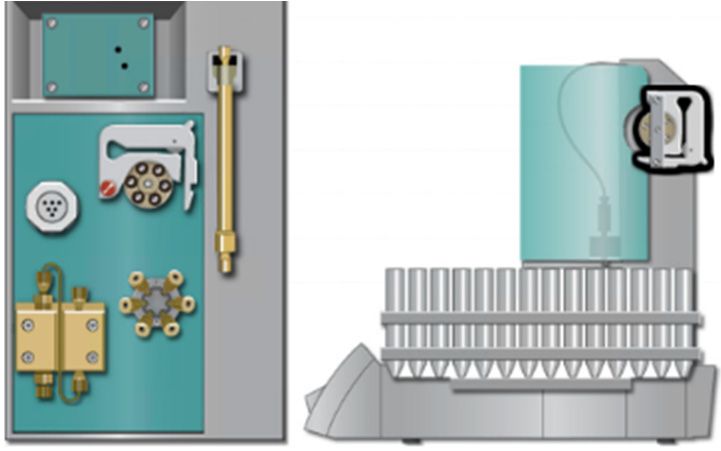Water is the basis of all life. It is essential for any metabolism and it is our primary foodstuff. However, availability of water, especially in the needed drinking water quality, is limited. Therefore, quality control and risk assessment is of tremendous importance to manage the global drinking water supply. To accomplish this, reliable, fast, and robust techniques must be available for water laboratories or drinking water providers to perform valid analysis.
Ion chromatography (IC) is the method of choice to determine the concentration of common ions in water. This information is crucial as drinking water must meet certain standards to guarantee health (e.g. nitrite and nitrate), as well as technical suitability (e.g. corrosiveness of chloride and sulfate).
The Eco IC is an ion chromatograph suitable for economical routine water analysis. It is fully automated and equipped with a conductivity detector, and optional chemical suppression. With this option, the background can be reduced significantly, increasing the signal to noise ratio, widening the detection range to ever lower limits. Using an A Supp 17 anion column, the analysis of major anions in drinking waters is robust and can be performed at ambient temperatures without additional temperature conditioning.
Drinking water, which is usually particle-free and not turbid, is analyzed directly. However, for turbid samples and samples containing particles, filtration is recommended to prevent clogging of the system and to improve the column lifetime. Inline Ultrafiltration is an optional add-on to automate sample filtration as an inline sample preparation step.

The analysis is performed on a compact IC system, fully automated with a compact autosampler and Inline Ultrafiltration (Figure 1). The anions are separated on the analytical column Metrosep A Supp 17 - 150/4.0 using a sodium carbonate / sodium hydrogen carbonate eluent. The column is operated at ambient temperature, providing sufficient separation with lower technical complexity for thermostability. After separation, chemical suppression with the Metrohm Suppressor Module (MSM) reduces the background conductivity to approximately 10 μS/cm and improves the S/N ratio. All anions are determined with a conductivity detector and quantified with the software MagIC Net.
The calibration ranged from 0.05–2.50 mg/L for fluoride, nitrite, bromide, and phosphate, from 1–50 mg/L for chloride and nitrate, and 5–100 mg/L for sulfate.
Various drinking waters from Switzerland were analyzed in this study. Figure 2 shows a typical chromatogram. The major inorganic anions measured were chloride (7–23 mg/L), nitrate (7–9 mg/L), and sulfate (5–35 mg/L).
Fluoride concentrations were in the range of 0.05–0.090 mg/L. Nitrite, bromide, and phosphate were not detected in substantial amounts. All samples fulfilled the quality requirements of local (TBDV 817.022.11) and EPA regulations (Safe Drinking Water Act) with respect to the tested ions.
| Analyte | Tap water 1 (mg/L) |
| Fluoride | 0.07 |
| Chloride | 22.78 |
| System peak / carbonate | n.q. |
| Nitrate | 7.28 |
| Sulfate | 15.34 |
Table 1 summarizes the concentrations of the major anions in drinking water from a village in Eastern Switzerland. The repeatability of results was acceptable with the described setup. Limits of detection were calculated according to EPA standards (EPA 608.3, 624.1, and 625.1) and were in the μg/L range for all tested anions.
Quality control for anions in drinking water is highly important to ensure that the waters meet the overall technical and health-related guidelines. Ion chromatography is a well-established multi-component technique for water analysis. It delivers fast and reliable results. Both the purchase price and running costs of the robust Eco IC are low, thus making it a perfect tool for routine water analysis. Additional automation and Inline Ultrafiltration save time and reduce labor costs as optional equipment.
Internal reference: AW IC CH6-1298-112016
 Share via email
Share via email
 Download PDF
Download PDF